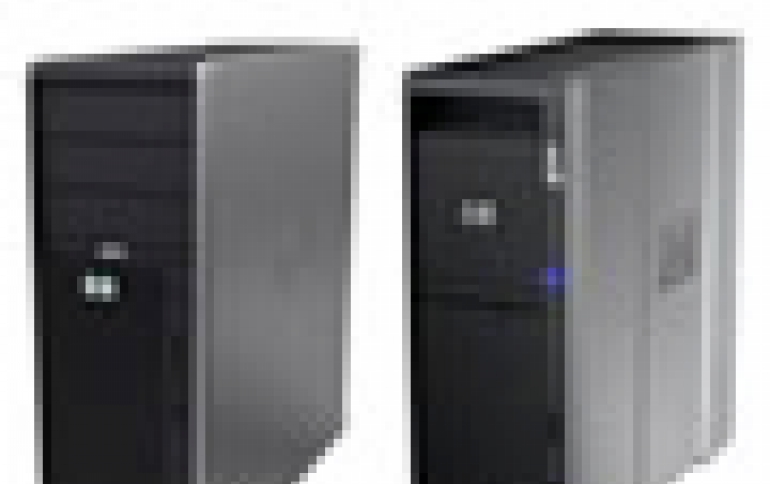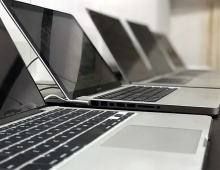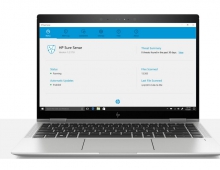
Workstation Market Saw Some Growth In Q3
Despite the global economic uncertainty, the the workstation market saw some growth in Q3'2011, acording to data released by Jon Peddie Research firm (JPR)
Last quarter, Jon Peddie Research labeled the workstation market's behavior as 'normal.' Shipment results weren't great, but they weren't bad either.
From mid-2008 to mid-2011, the market took a hit from the biggest economic downturn in a generation, followed by a relatively steady, but not stutter-free, recovery. Meanwhile, the closely related market for professional graphics, its results a harbinger for workstations, found its recovery pace a bit too brisk, stumbling into a mild - and fortunately short-term - second dip. In that context, the neither hot nor cold results from the workstation market's second quarter might not have elicited celebration, but they at least calmed some still-frayed nerves.
Jon Peddie Research has tabulated results for Q3, and the numbers look good. Around 1.02 million workstations shipped worldwide in the third quarter, representing robust 12.5% sequential growth as well as 20.1% year-over-year. The quarter saw a new high-water mark for the market, marking the first time shipments have exceeded 1 million units.
"The third quarter did represent a meaningful push forward," notes Jon Peddie Research analyst and Workstation Report author Alex Herrera, "but the question remains as to whether it will last. Global economic uncertainty remains in abundant supply. The financial picture in Europe continues to change on a daily basis - one minute, it's a doomsday scenario and the next a light appears at the end of the tunnel. Until the volatility in financial markets subsides, we have no strong confidence that the workstation market (or any market, for that matter) will find a steady pace forward."
The research firm also reported that among workstations vendors, HP reinforced its top position, despite the company's awkward about-face in its plans for the Personal Systems Group (PSG), the business unit that houses the company's workstation business. Dell remained at number two, though lagging further, while Lenovo gained ground at number three, in part thanks to its nascent joint venture with NEC. And in the closely related market for professional graphics hardware, Nvidia continued its dominance of the market, with its Quadro brand stubbornly refusing to cede much share to a more competitive FirePro line from AMD.
From mid-2008 to mid-2011, the market took a hit from the biggest economic downturn in a generation, followed by a relatively steady, but not stutter-free, recovery. Meanwhile, the closely related market for professional graphics, its results a harbinger for workstations, found its recovery pace a bit too brisk, stumbling into a mild - and fortunately short-term - second dip. In that context, the neither hot nor cold results from the workstation market's second quarter might not have elicited celebration, but they at least calmed some still-frayed nerves.
Jon Peddie Research has tabulated results for Q3, and the numbers look good. Around 1.02 million workstations shipped worldwide in the third quarter, representing robust 12.5% sequential growth as well as 20.1% year-over-year. The quarter saw a new high-water mark for the market, marking the first time shipments have exceeded 1 million units.
"The third quarter did represent a meaningful push forward," notes Jon Peddie Research analyst and Workstation Report author Alex Herrera, "but the question remains as to whether it will last. Global economic uncertainty remains in abundant supply. The financial picture in Europe continues to change on a daily basis - one minute, it's a doomsday scenario and the next a light appears at the end of the tunnel. Until the volatility in financial markets subsides, we have no strong confidence that the workstation market (or any market, for that matter) will find a steady pace forward."
The research firm also reported that among workstations vendors, HP reinforced its top position, despite the company's awkward about-face in its plans for the Personal Systems Group (PSG), the business unit that houses the company's workstation business. Dell remained at number two, though lagging further, while Lenovo gained ground at number three, in part thanks to its nascent joint venture with NEC. And in the closely related market for professional graphics hardware, Nvidia continued its dominance of the market, with its Quadro brand stubbornly refusing to cede much share to a more competitive FirePro line from AMD.


















